![]()
Created 27 July 2002 Updated 14 Aug 2017
 |
|
Salisbury Hall. The site of the Hall and the Museum is a very old one. It is close to the first century BC settlement of Wheathamstead, the major Roman town of Verulamium and St. Albans which is of late Saxon foundation. Early notable (but unwelcome!) visitors to the area were probably Julius Caesar in 54BC, and Boadicea of the Iceni in 61AD. It was here, in September 1939, the de Havilland Aircraft Company established the Mosquito design team in the Hall, the Prototype Mosquito, E0234/W4050, subsequently being built in the adjacent buildings. The Mosquito was designed as an unarmed, high-speed bomber. By dispensing with defensive armament the size, weight and drag of the aircraft could be greatly reduced. It was assumed that the resulting small, fast aircraft bomber would be almost impossible to intercept. The de Havilland design team lead by R.E. Bishop, R.M. Clarkson and C.T. Wilkins proposed the design of a twin-engined bomber, able to carry 1000 pounds (454kg) of bombs over 2400km, and able to reach a speed of 655km/h. The staff officers of the RAF and the officials of the Air Ministry where highly sceptical. They had earlier seen how some fast bombers had fallen short of the promised performance, or had been overtaken by progress in fighter designs, and became highly vulnerable. Also, de Havilland proposed a wooden construction, which is generally heavier than a metal one, but could be given a very smooth finish. However, a wooden structure was certain to deteriorate in a tropical climate, an important consideration for the RAF. The project proceeded hesitantly, and would probably have been cancelled without the support of Sir Patrick Hennesy. Finally, a small series was ordered, as reconnaissance aircraft. The prototype was built in great secrecy in Salisbury Hall, and made its first flight on 25 November 1940. The D.H.98 handled well and reached 632 km/h, faster than the fighters in production. Two days before this prototype below (W4052) was ready to fly, a German agent was dropped by parachute close to Salisbury Hall, in plain clothes and with a portable radio. He was captured next day, and the day after, May 15, 1941, Geoffrey De Havilland flew the fighter prototype from a 450-yard field beside the shed in which it had been built. |
 |
| The Mosquito was a exceptionally streamlined design. The fuselage was made in left and right halves, which were shaped in concrete rigs and then joined. They were made of balsa wood between two layers of cedar plywood. The rest of the airframe was primarily made of spruce, with plywood covering. The wing was built in one piece, and attached to the lower side of the fuselage structure. The bomb bay was below it. The Merlin engines were put in steel-tube mountings in underwing nacelles, which also contained the main landing gear. The radiators were housed in the extended leading edges of the wing centre section, with inlets in the leading edge and outlets under the wing. This was an arrangement which reduced drag and even contributed positive thrust. The cockpit, over the wing leading edge, had seats for the pilot and the navigator. The bomber and reconnaissance models had a transparent nose. The first production version was the PR Ski reconnaissance aircraft, powered by Merlin 21s, which arrived in the summer of 1941. Only a few of these were built, before production was switched to the B.IV bomber. The first Mk.IVs were converted Mk.Is, but from November 1941 on wards the production B.IVs arrived. Originally they carried four 250 lb bombs, but later a switch was made to four 500lb bombs with shortened tail fins. The PR.IV was a reconnaissance conversion of the B.IV. The T.III trainer appeared in early 1942, but was built in relatively small numbers. |
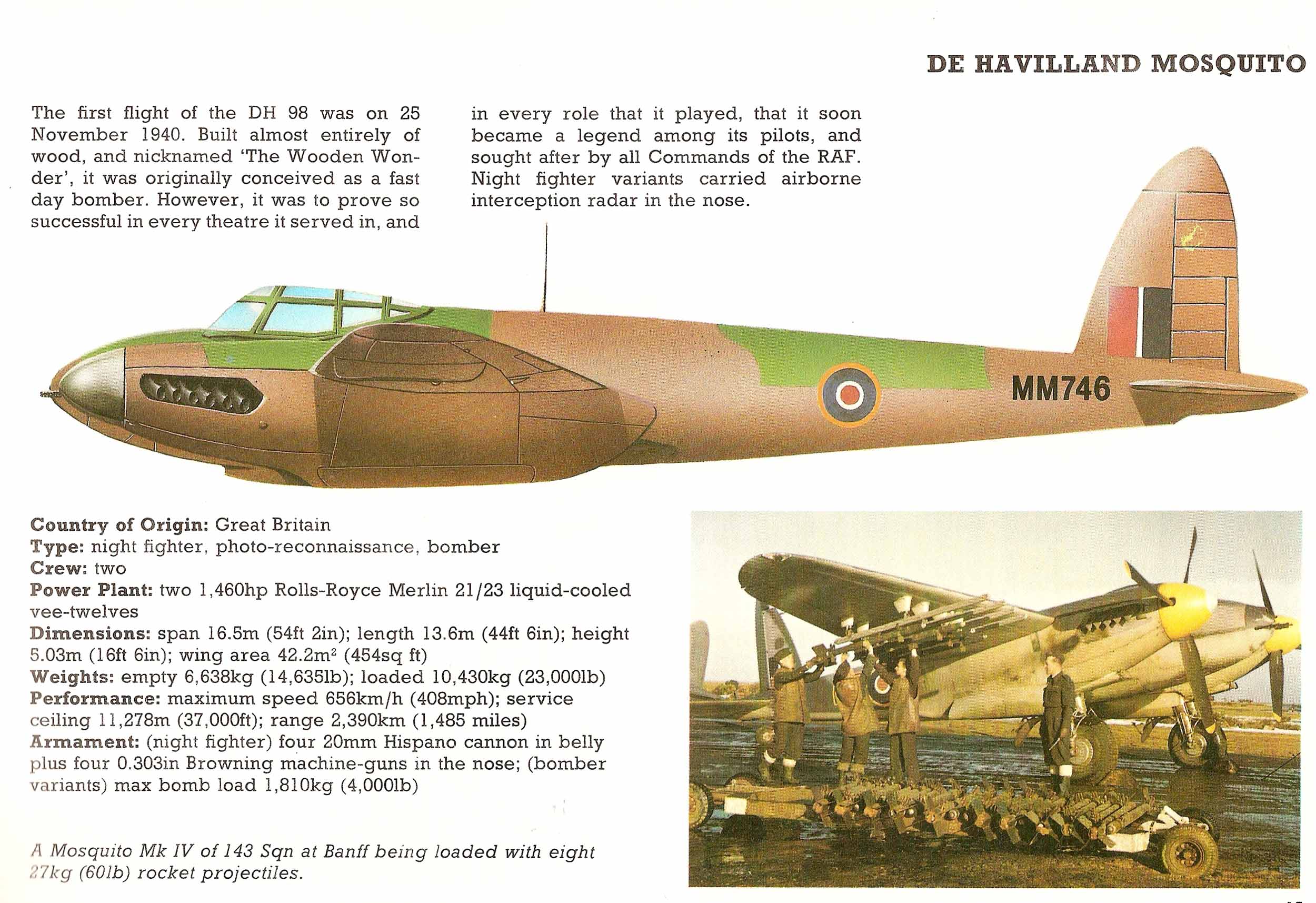 |
| From the start, high priority was allocated to a heavy fighter version, and the
initial contract was amended so that half the order became fighters. They
emerged as NF.II night fighters, with four 20mm cannon, four .303 machine guns,
and AI Mk.IV radar. The NF.II became operational in May 1942, somewhat delayed
by a shortage of Merlin engines and the end of the German night bomber
offensive. Later night fighter models had AI Mk.VIII or Mk.X radar. The
installation of the radar dish in the nose required the deletion of the machine
guns. In June 1942 the FB.VI fighter-bomber model flew, and this was to become the most built Mosquito. It had the four .303 guns and four 20mm cannon of the night fighter, but could also carry two 500lb bombs internally , and from 1944 on wards they were equipped to carry four rockets or a 500lb bomb under each wing. A variation was the FB.XVIII, sometimes called "Tse Tse", in which the four 20mm cannon were replaced by a single 57mm Molins cannon, which weighed 715kg and fired 6lb shells. Only two .303 guns retained, and additional armour was installed. These were originally intended as anti-tank aircraft, but because the 57mm cannon was obsolete in this role they were directed to Coastal Command. The high-altitude performance of all models was greatly increased by the installation of Merlins with two-stage compressors, as installed in the PR.VIII, B.IX, or NF.XXX. The B.XVI introduced further refinement, with 'handed' engines to eliminate torque, and a pressure cabin. Some were fitted with bulged bomb bay doors, and could carry a single 4000lb (1814kg) bomb. |
|
The Mosquito soon made its mark in many roles. It became the standard night fighter of the RAF, replacing the slower Beaufighter. They defended Britain against small numbers of German bombers, claimed 486 V-1s, escorted British bombers over Germany, and in "intruder" units they flew offensive missions at night. The bomber versions equipped the Pathfinder Force, marking targets for the heavy bombers of Bomber Command, and were used for light night attacks on German cities. Until the night fighter version of the Me 262 jet appeared (in small numbers) in 1945, the Germans did not have an effective defence. The fighter-bombers attacked precision targets throughout Europe with bombs and rockets. The long-range reconnaissance versions complemented the PR Spitfires. They were also used by the USAF, that assigned the designation F-8. Perhaps the most unusual version was the Sea Mosquito TR.33, a highly modified version which was designed for carrier operations -- a plan that was abandoned when the war ended. Coastal Command had seven squadrons equipped with the FB.VI, and later also received the 27 FB.XVIIIs. The Mosquitos were used for anti-shipping strikes, mainly against coastal traffic. Because this brought them within the range of land-based Luftwaffe fighters, good performance was essential. But the coastal convoys were also well protected with anti-aircraft guns, and attacks were dangerous. From November 1943 onwards the Mosquito was also used
to attack U-boats shortly
after, or just before they entered a port. Warning of these opportunities was
provided by
code breakers. At
that moment the U-boats travelled on the surface, and therefore were vulnerable
to rockets or the 57mm shells of the FB.XVIII. For safety, the U-boats usually
formed small convoys, with an escort of mine sweepers or so called Sperrbrecher
ships, which had hulls reinforced with concrete as a protection against mines;
both types bristled with anti-aircraft guns. For example, on 27 March 1944 six
FB.VIs and two FB.XVIIIs attacked a convoy towards La Pallice, formed by U-960
with a escort of four M-class mine sweepers and two Sprerrbrecher vessels. Three
mine sweepers suffered light damage, U-960 was badly damaged, two Mosquito's
returned home with serious damage, and one crash-landed.
U-boats lost to Mosquito aircraft
|
|
AMIENS PRISON |
|
|
|
The raid on Amiens Prison is probably the single most "famous" raid undertaken by the Mosquito. The idea was to precisely bomb only certain buildings in the complex in order for many hundreds of prisoners to escape the clutches of the Gestapo. This took place on February 18th 1944. Members of the French Resistance were being held there, awaiting execution. 18 Mosquito's took part, swooping down at well in excess of 300 miles an hour to a height of about 60 feet from the ground in order to precisely blow holes in the prison walls. Other targets were the guard sleeping quarters and eating areas. The 3.5 m (12 ft) wide hole blasted in the south wall, through which 258 prisoners escaped, of whom 179 were common criminals, 29 were termed 'French politicals' (which usually meant they were Communist Party workers), and 50 were members of the French Resistance, some of whom had been convicted of committing terrorist acts against German soldiers or the local French population. Another example of the precision of the Mosquito daytime strikes was accomplished on 20 January 1943. Whether by design or just a coincidence, this date was the 10th anniversary of the Nazis’ seizure of power and a Mosquito bomber precision strike knocked out the primary broadcasting station in Berlin, while the Commander in Chief, Reichsmarschall Hermann Göring was talking on air, cutting out the power and taking his speech completely off the broadcast! Whether by design or just a coincidence, this date was the 10th anniversary of the Nazis’ seizure of power and a Mosquito bomber precision strike knocked out the primary broadcasting station in Berlin. The Commander in Chief, Reichsmarschall Hermann Göring was talking on air, cutting out the power and taking his speech completely off the broadcast!
|
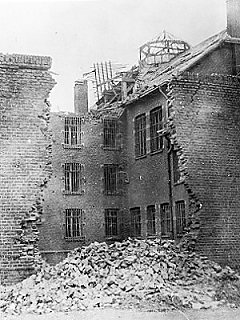 |
|
|
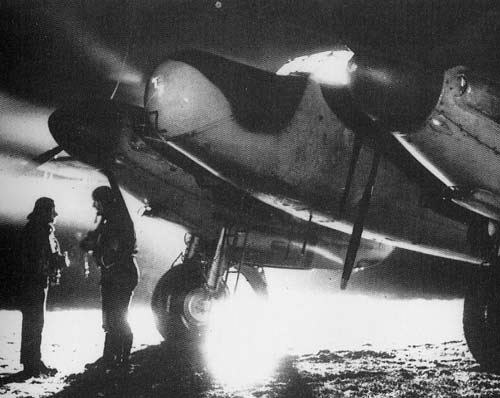 Night Fighter |
|
Mosquito Encounter with Me 262 26 July 1944 was a bright and clear day over Munich. A lone RAF Mosquito reconnaissance aircraft peered down over the city from 28,000 feet. Its pilot, Flight Lieutenant A E Wall of 544 Squadron, kept the aircraft steady. Its navigator, Pilot Officer A S Lobban, lay in its nose and operated the camera which captured black-and-white images of the city’s key targets. At this height they felt relatively safe from anti-aircraft fire and they were confident they could outrun any of the Luftwaffe’s Bf-109s and Fw-190s based at the nearby Flughaven Reim. Nevertheless, their aircraft – unarmed and constructed almost entirely of wood – was vulnerable and they had remained keenly alert ever since taking off from their base at RAF Benson, Oxfordshire, early that morning. After a few minutes of circling over the city they had got the imagery they needed; Lobban resumed his seat and they began to head for home. Suddenly Lobban called out, “Hey what’s this? Bandit at 6 o’clock! And closing fast!” Wall was surprised. How could an enemy fighter have reached their altitude so quickly, without being seen? There was no time to think about it – he had to pull away from the attacker in a hurry. He shoved the throttles forward, and reset the fuel mixture to full rich. The Mosquito’s powerful engines immediately responded, and they sprinted ahead. The Mosquito’s official maximum speed was 420 mph, but Wall knew it could do better than that, when pushed. No Messerschmitt or Focke-Wulf could overtake it. All he had to do was keep the throttles wide open and fly straight and level, and the enemy would be left far behind. He was wrong. “Still closing on us!” Lobban shouted. Wall could hardly believe it. The Mosquito’s airspeed was now 430 mph, but their pursuer was rapidly closing down the distance between them. To gain even more speed, Wall put the aircraft into a shallow dive. The needle of the airspeed indicator whipped to 440 mph. Then to 450, 460, 470. The Mosquito vibrated roughly and was in danger of falling apart. Wall drew the stick back and brought the Mosquito level. Not only had the enemy aircraft stayed with them, it came closer still. And then it began firing its cannons. Tracers streaked past the Mosquito, inches above the cockpit canopy. “Break!” yelled Lobban. Wall backed off the throttles, and swung left. The attacker flashed by, and as it did, they got their first good look at it. “The bloody thing’s got no props!” Lobban exclaimed. Indeed it hadn’t. The enemy aircraft was a low-winged monoplane with two large engine pods, and a configuration unlike any they had seen before. The strange aircraft was now turning towards them. It didn’t seem to be all that manoeuvrable, perhaps because of its enormous speed. At least, it seemed to require a great amount of space to turn about. Wall knew that if he could turn more tightly than the other aircraft, he might be able to keep it from getting a clean shot at them. He added power and reversed course, heading directly towards it. The two aircraft began closing on each other at a combined speed of nearly 1,000 mph. It was like flying towards a screaming bullet. The enemy aircraft fired again, but was not lined up well enough to hit them. At the last possible moment, Wall flicked the ailerons and sent the Mosquito past the attacker. Then he continued to turn hard, G-forces pushing him deeper into his seat. As he’d hoped, it took longer for the enemy aircraft to swing around. Again, Wall headed directly towards it. And again he flew by before fire from its guns could strike the Mosquito. But on the next pass his opponent made a smart move, beginning his turn only a fraction of a second after Wall began his. Then he dove, and climbed toward the British aircraft from underneath, firing his canons as he came. There was a loud bang and the Mosquito lurched and shuddered. Wall struggled to maintain control, but the aircraft was still flying. The only response he could think of was to try another dive. He pushed the stick forward, and as he did, he caught sight of cloud cover below. He raced downward, and an instant later was inside the cloud’s solid white sanctuary. Wall then began circling, so as to remain inside the protective vapour. There was considerable turbulence, but it was infinitely preferable to explosive cannon shells punching more holes in the aircraft. “See if you can check the damage,” Wall ordered. Lobban left his seat and opened the inner hatch. As he did, a strong rush of wind entered the aircraft. After a few moments he closed the hatch and returned. “The outer hatch is gone,” he reported. “Blown clean off.” “Anything else?” “Not that I could see. Although there could be.” Wall went on circling for another minute or two. Finally he said, “Watch it now, we’re coming out.” When they emerged from the cloud, the two men rapidly scanned the sky. The mysterious attacker had disappeared, which was just as well as the Mosquito’s vibrations were growing worse. Wall reduced speed, but it was clear that the aircraft would not make it all the way back to England. The engine’s cylinder head temperatures were dangerously high, which was unsurprising considering how hard the engines had been revved. He asked Lobban where the nearest Allied airbase was. Lobban consulted his charts. “There’s Fermo, in Italy. It’s near the Adriatic coast.” Wall gently turned on their new course and nursed the shaking aircraft over the Austrian Alps. Luckily, they encountered no further problems from either flak or enemy fighters. What the hell had hit them? The strange enemy aircraft had clearly displayed fantastic speed. Usually when a new type appeared, it might be 20 or 30 mph faster than its rivals. Yet this aircraft with no propellers was at least 100 mph faster. Wall knew enough to conclude that the Germans had succeeded in developing jet aircraft. What he probably hadn’t yet appreciated, as the Mosquito limped towards Italy, was the historical significance of their encounter. They had battled with the Messerschmitt Me 262, the world’s first operational jet-powered fighter aircraft. It’s pilot, Luftwaffe ace Leutnant Alfred Schreiber, would go on to claim their damaged Mosquito as the first aerial victory by a jet fighter in aviation history.
|
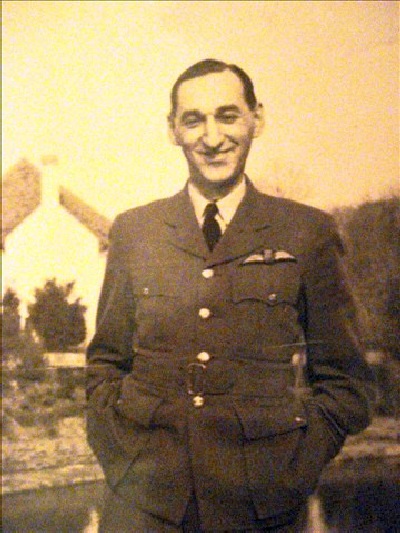 Lionel Alexandroff (see email below) |
| June 09: His son wrote: My father was an instructor at an RAF air station, in Canada from 1942 till 1944. He was a Lieutenant, and taught future Mosquito pilots the basics. He complained to me that the cold weather was dreadful, and made the fuselage of the Mossie "creak, and whine"!! The above is a photo of my Dad, in 1940, on leave in Manchester, before he was stationed in the Middle East, flying VIP's to India via Kabul...in DC-3's....one of his favourite aircraft!! My thoughts, and prayers go out to all the families of the RAF pilots, during WWII. John Alexandroff...A.K.A. "Doc Greek". |
| January 15th 2008. Got an email from Dennis Muldownie, Western Australia who told me this anecdote: In the ‘60’s I had the pleasure of talking to Sir Basil Embry, then retired to farm here in West Australia. He was of course a Mozzie lover, and flew on the Copenhagen raid. He told the anecdote of the RAF station devoted to PR work, that had an American PR unit sharing the base. Apparently the buzz went round that the PR Spitfires on the RAF side were to be replaced by Mossies. An hour later the first was delivered. One American was heard to remark that “it must be a fast ship! It darn near beat the rumour!” |
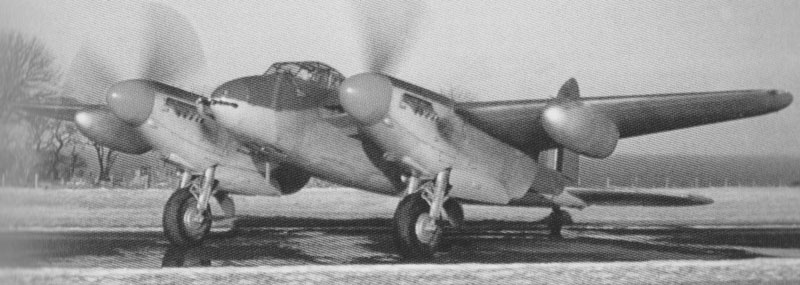 |
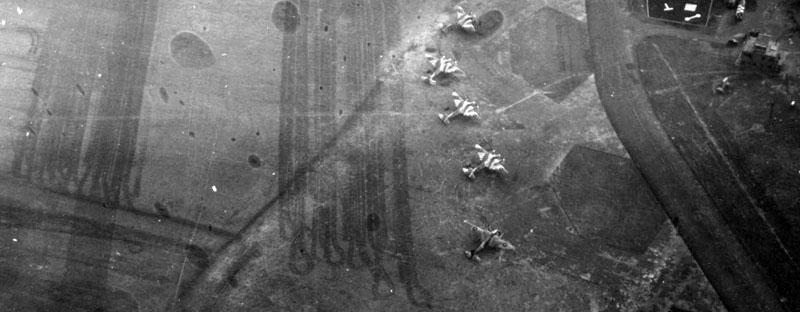 |
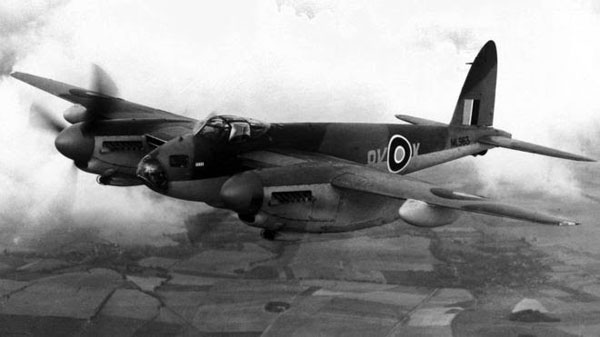 |
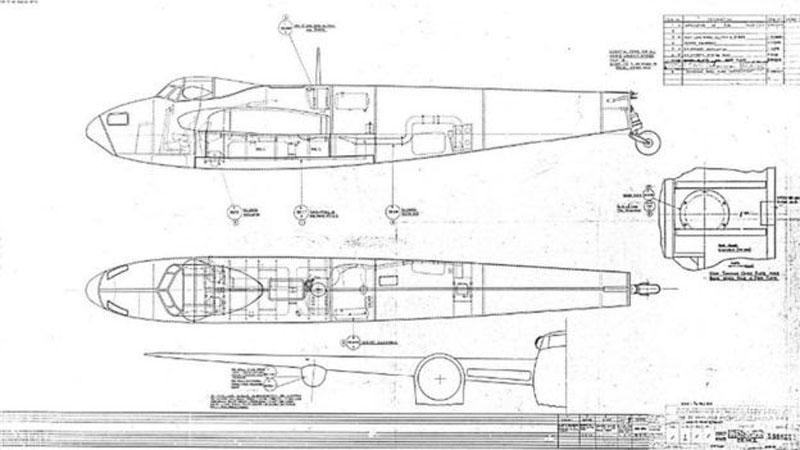 |
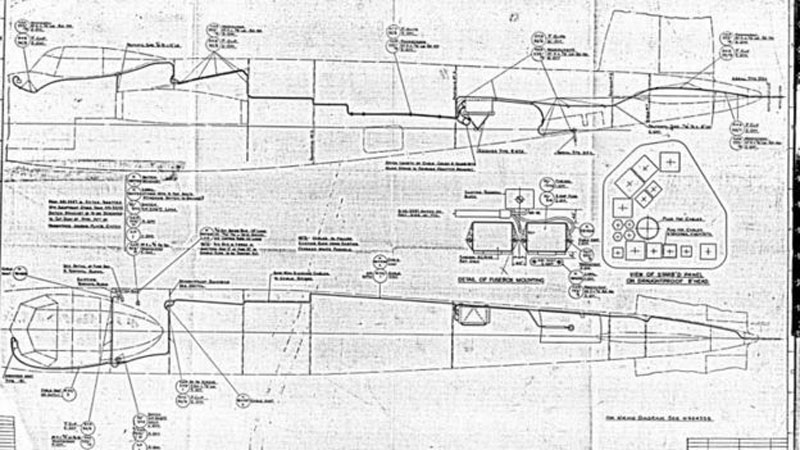 |
References (Not necessarily all where I obtained this information)
http://www.mossie.org/Mosquito.html
http://www.home.gil.com.au/~bfillery/mossie02.htm
http://www.geocities.com/CapeCanaveral/Hangar/6952/MOSSUB.html
http://www.hertsmuseums.org.uk/dehavilland/
http://www.aviationartprints.com/mosquitos.htm
http://users.chariot.net.au/~theburfs/mossiepage1.html
http://www.air-photo.com/english/jericho.html
Salisbury Hall
London Colney
Herts AL2 1EX
info/answer 01727 822051
fax/answer 01727 826400
Contact Ralph Steiner
http://www.luftfahrtmuseum.com/htmd/dte/dh98.htm
http://bawdeswell.net/rtwebsite/villages/Bawdeswell/Baw%20Ch/Mosquito.htm
http://www.home.gil.com.au/~bfillery/mossie04.htm
http://www.aviation-history.com/dehavilland/mosquito.html
http://www.asrmcs-club.com/ - Air Sea Rescue
Like all my pages, they are mainly built up by
contributions and some research. I am not a historian, nor do I claim to be.
This is purely for fun, AT MY OWN EXPENSE, and as long as I can afford to keep
all these pages online, I shall, but the years roll on long live the Mossie!!